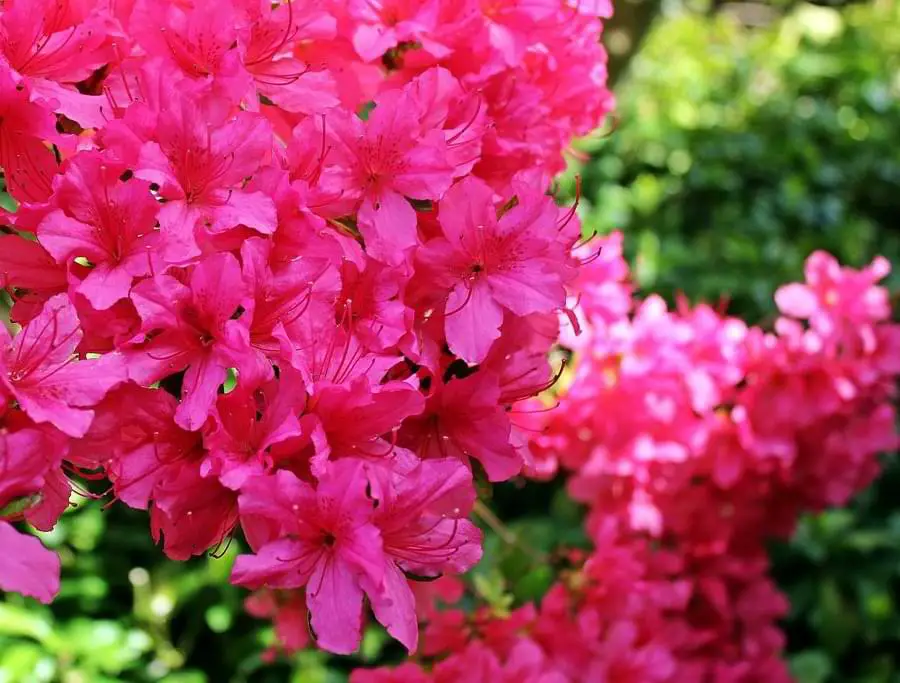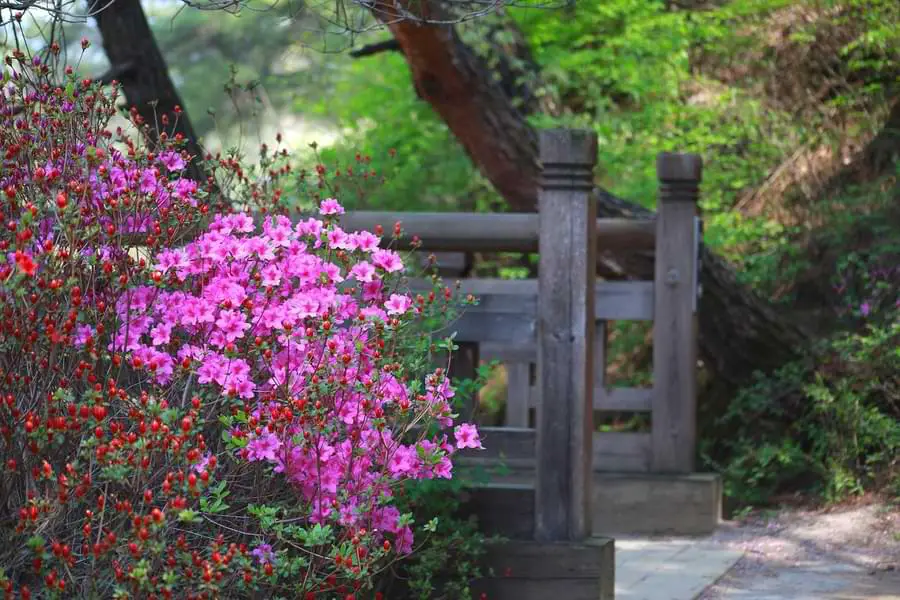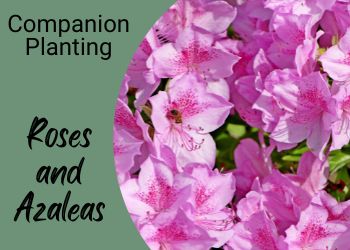A rose bush on its own as a centerpiece in a garden, or in the center of a border is a great sight to behold – and can look very stately! But often we want to blend our roses into an overall garden look. Plus, we often just want more plants! So should you plant roses and azaleas together?
Here’s the quick information you need to know when considering planting roses and azaleas together, then we’ll get into more details.
Azaleas do not companion well with roses. They are likely to absorb much of the water and soil nutrients that roses would need. Also, their shade and sunlight requirements do differ. Aesthetically they can also grow taller than many rose bushes. Encore azaleas may work better with roses.
But I probably should explain further, and some factors can match ok, so let’s explore this further and I’ll tell you which azaleas you might want to try.

Roses and Azaleas together
Here’s an overview of some of the more important factors when planting roses and azaleas together. Namely, colors, height, zoning, soil and nutrition, and shade.
General colors
Depending on the theme you’re going for, you do want to look at what colors you’re introducing to your garden to maintain your desired effect.
So, it’s important to look at the general colors available of any plant that you’re considering companion planting with roses.
Azaleas have a broad spectrum of colors just like roses. They come in orange, white, purple, red, pink, and yellow colors. Roses have a similar list of colors available too.
So in terms of color, both of the plants have a variety of options available and can be matched or contrasted well.
But, there are other factors too, which do not assure the healthy companionship of both plants together. Let’s get into some of those…

Growing height
Home gardened azaleas grow normally from 3 to 6 feet tall, however, some native type azaleas plants that are grown commercially can reach a massive height of more than 20 feet.
On the other hand, roses have certain miniature varieties of just 8 inches, and some typical rose bushes can get to a height of 4 to 6 feet under normal conditions. Some roses like climbing roses (pillar roses) can go as high up as 8 to 15 feet.
Overall, this is partly why most experts say that it’s not good to companion roses with azaleas because it mostly remains the same as the height of the rose.
However, in some cases, azalea may grow even taller than the rose itself and ruin the ornamental flamboyance of the pair together.
Growing zone
Growing zones are critical. Roses grow well in USDA hardiness zone 7 to 9 specifically.
Roses like hybrid tea roses Peace, and another called Chrysler imperial, are zone 7 friendly.
Similarly, the Queen Elizabeth pink and Louis Phillipe roses can be grown in zone 8 and 9 respectively.
But some of the more hardy varieties are good for zones 3 and upward, or even zone 2 upwards, such as the white rugosa rose.
As for the azaleas, most of them grow in zone 6. However, a few varieties also do well in zones 7 and 8.

So, it generally means that some of the species of both plants can manage to grow together under strict supervision. But it’s not the ideal case of companion planting and requires more than normal effort to keep both of them happy in the same soil bed.
Soil type and nutrients
Roses like well-drained, neutral, loam soil that has ideally a pH value of around 6.5 to 7. However, roses are quite adaptive plants and they can tolerate a minor fluctuation in the pH value.
Contrary to that, azaleas require an acidic soil of 4-6 pH for the best growth. Planting the azalea in a rose bed may require you to add more compost or acidifiers into the soil, which in some cases disturbs the water uptake for roses.
You can check the value with pH meters like this one. And you can adjust any major discrepancies with the right treatments.
For the nutrients, it is a frequently observed phenomenon that azalea with shallow roots crowd the roses and steal away the nutrients and water from the roses.
Shade
The shade factor also doesn’t support the companionship of roses and azaleas together.
Roses need direct sunlight for at least 6 hours a day, preferably without shade. However, many azaleas prefer shade and only need around 3 hours of morning mild sunlight.
Partial sun enhances the strong blooms in azaleas, but a direct sun source for over 3 to 4 hours can burn its delicate leaves.

Knock out roses and Azaleas
Generally, knock Out® roses and azaleas are not ideal companions. Roses will go with azaleas as long as the type of azalea is ok in full sunlight. Don’t plant too close together, and adjust for pH soil differences. Keep in mind you may not see true results for the first couple of years.
Drift roses and Azaleas
Drift roses can work ok with azaleas if you’re creating layers. Drift roses are shorter ground cover roses, so can surround a border, with azaleas further back in the bed. Keep in mind pH soil differences and adjust if required. Also select autumn azaleas with similar sunlight and shade needs.
Roses and Azaleas Pros and Cons
Here’s a quick roundup of the pros and cons of companion planting azaleas with roses:
Pros
- Good choice of azalea colors
- Some azaleas like direct sunlight
- Easy to maintain
Cons
- Azaleas generally prefer shade
- May steal water from roses
- May grow taller than roses
Which azaleas to plant with roses
There are some varieties of azaleas that might well suit roses quite well. I’d just be careful not to plant them too close and maybe adjust the soil if needed.
So try the Autumn Bonfire™ Encore® Azalea, which is a dwarf plant so it won’t overshadow your roses. They grow fast and are suitable for full sun and partial shade too. It blooms three times a year and is easy to maintain.
I suspect the same might go for other members of the azalea Autumn varieties. 🌹
Roses and Azaleas – Conclusion 🌹
Although it may work well in some circumstances – like with the Autumn varieties, I’d consider not planting roses and azaleas together in most circumstances.
The different requirements in sun and shade can be a major factor, as are the potential issues of azaleas taking water and nutrients from the roses too.
Not to mention the odd height differences you might encounter.
If your rose is particularly meant to be more “center stage’ than your azaleas, then this is probably not the best combination.
If you’re looking for good rose companion plants, then check out my rose companion plant article, in there I provide what you need to be aware of, as well as 18 types of plants that make good companions for your roses.
I hope this has helped. Be sure to check out my recommended tools and resources, and check out some of my related articles below.

Hi, I’m Michael. My passion for roses was sparked a few years ago after visiting a dedicated community rose garden. So Rosehow.com represents my take, my learnings, and my help for anyone looking to grow, be proud of, and harvest roses.

